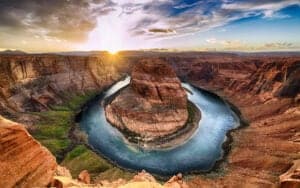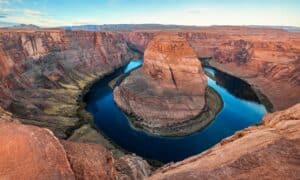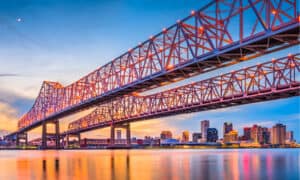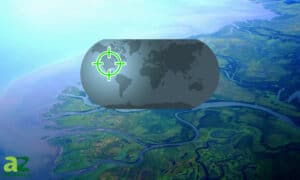The Parts of a River: The Essential 10 Parts You Need to Know
@media (min-width: 481px) {
.mobile-top-content {
display: none;
}
}
#mobileTopContentCTACarouselControls { overflow: hidden; text-overflow: ellipsis; white-space: nowrap; }
.mobile-top-content .more { color: #fff; }
.mobile-top-content a { color: #fff; text-decoration: underline; }
.mobile-top-content a:hover { color: #fff; text-decoration: underline; }
@media (max-width: 480px) {
.mobile-top-content {
background-color: #06a10b;
color: #fff;
text-align: center;
/*height: 60px;
padding-top:5px;*/
font-size:80%;
/* display: block; */
margin: 0px -30px;
}
}
Rivers are flowing bodies of water with distinct boundaries that drain into another body of water, usually an ocean or another river. They are used to generate electricity and are used as the lifelines of cities and towns throughout the world. Yet, rivers aren’t simply a homogenous form of water that appear out of nowhere. They are complex and dynamic watercourses. We’re going to look at the 10 essential parts of a river that you need to know if you want to understand the nature of these bodies of water and how they form.
The 10 Parts of a River

Bryan Neuswanger/Shutterstock.com
There are many important parts of a river, but we’re not going to cover everyone. We will provide you with a brief overview of the most important elements. That way, when you’re discussing or reading about these bodies of water, you’ll have some context.
1. Drainage Basin
The condensed definition of a drainage basin is a large area where precipitation collects and then runs into a common outlet area. All the precipitation that eventually funnels into the same area and all the groundwater below the surface in that area is part of the same drainage basin.
Drainage basins are integral to rivers, supplying them with the water they need to flow. However, the basins are all different sizes. Some of them can be a few thousand square miles. The larger ones, like the drainage basin feeding the Amazon River, is upwards of 2 million square miles in size!
This is a basic definition of an important and complex idea. True studies about drainage basins will often integrate aspects of land morphology, soil, vegetation, and much more.
2. Headwaters (Source)
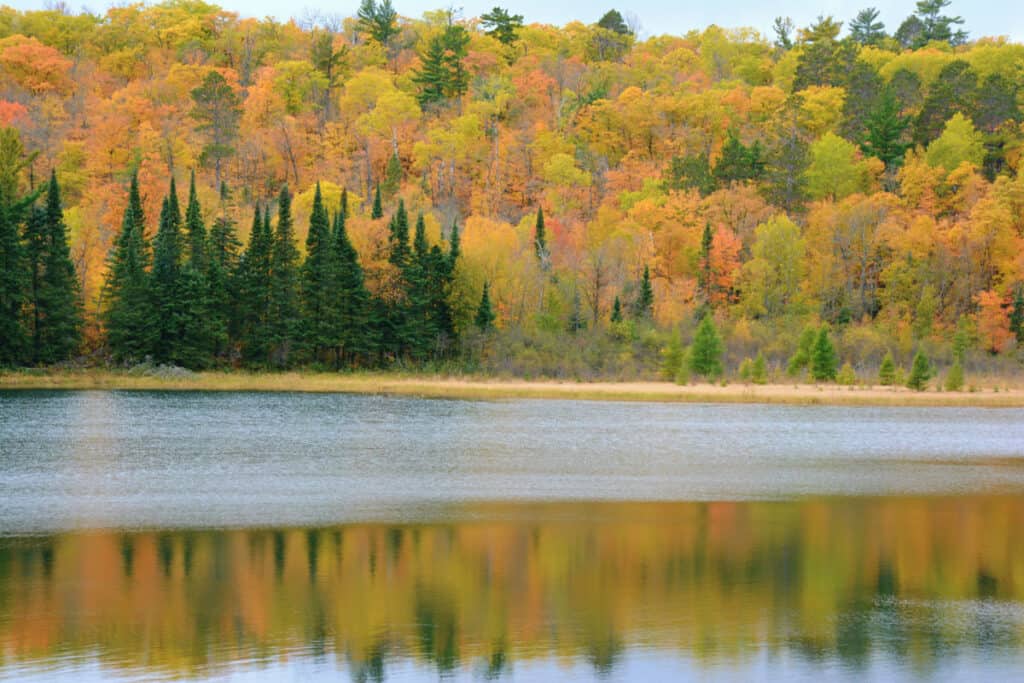
iStock.com/Jeff439
The terms headwaters and source are interchangeable, and they both refer to the streams or lakes that act as the source of a river. For example, the Mississippi River is said to begin in Lake Itasca, Minnesota.
However, even that lake is fed by other streams, so one of them would technically be the true headwaters or source of the waterway. Finding the headwaters requires a great deal of effort and some speculation. Sometimes, this leads to arguments about the length of these waterways in comparison to one another.
3. Tributaries (Affluent)
Tributaries are the streams and other sources of water that feed into the river throughout its flow. One river running into another is an example of a tributary. Tributaries increase the overall flow of water in the waterway.
For example, the Ohio River is a tributary of the Mississippi River, vastly increasing the amount of water that runs through the latter. Think of a tributary as paying tribute to the other body of water.
4. Confluence
A confluence is a point where two rivers meet and then continue as one body of water. An example of a significant confluence is when the White Nile and the Blue Nile meet in Khartoum, Sudan. The combined waters form the Nile River that flows northward into Egypt and the Mediterranean Sea.
5. Channel
The term “channel” is used in many ways, but for our purposes, a channel is a path or confine for a body of water. Sometimes, the term channel is used about rivers, but it can also be used in the context of straits and deltas as well.
6. Riverbank

iStock.com/Utopia_88
A riverbank is the land on the side of a river. Cities are often built on riverbanks so the citizens can take advantage of the freshwater that flows through them.
Riverbanks are barriers between the water and the ground beside the river. Riverbanks are higher than the water flow and will be found on either side of the river.
7. Floodplain
A river’s floodplain is the low-lying land adjacent to a river and is prone to flooding when higher than normal discharges occur. These typically flat areas of land stretch all the way to the edge of the valley that contains the waterway.
Floodplains can be quite large, and they’ve been important to agriculture throughout human history. Although it may seem counterintuitive to build a home or farm on a floodplain, the flat area, high-quality soil, and transportation capabilities are hard to pass up. Of course, floods in these areas can be disastrous.
8. Mouth
The river mouth is where the water finally flows into a larger body of water. This can be the confluence of a river, or it can be where the water flows into a gulf or directly into the ocean. Sometimes, this is called a delta, but a delta has a more specific connotation that we’ll explore below.
9. Flow (The Most Obvious Parts of a River)
What’s a river without the water? The flow is the water that is running within the river. Humans pay close attention to the flow because small changes over time can divert the flow to a new area. For example, human intervention is the only thing keeping the Mississippi River from taking on a new course.
Humans also have to consider the discharge of the flow or the amount of water coming out of the river. The spread of pollution and erosion are two important impacts of a river’s discharge.
10. Delta

Jeffrey T. Kreulen/Shutterstock.com
Delta is a term that is used interchangeably with the mouth. Technically, the terms can describe the same area. However, deltas are best described as wetlands at the end of rivers where the land flattens, and the water flow spreads into a fan shape.
Several smaller streams called distributaries serve as outlets into the larger body of water at a delta. Also, sediment buildup allows the river water to flow out of its typical channel and banks. Here, the river’s speed slows, and the water flows into the next body of water in multiple streams stemming from the same waterway. Not all rivers have deltas, though.
Final Thoughts on the Parts of a River
You now know about the ten most important parts of a river. You know where rivers form, their boundaries, and where they end. River hydrology is a complex topic, and these minimal definitions should not be used as your sole source of understanding.
Instead, use these definitions as a base of knowledge from which to grow your understanding of what can be a topic confounded by minutia. Learning about rivers takes time and patience, but this foundation can help propel your learning.
Read about the differences between a river and a bayou.
More from A-Z Animals
.more-snake-card-image { max-height:140px !important; }
@media (min-width: 481px) {
.mobile-top-content {
display: none;
}
}
#mobileTopContentCTACarouselControls { overflow: hidden; text-overflow: ellipsis; white-space: nowrap; }
.mobile-top-content .more { color: #fff; }
.mobile-top-content a { color: #fff; text-decoration: underline; }
.mobile-top-content a:hover { color: #fff; text-decoration: underline; }
@media (max-width: 480px) {
.mobile-top-content {
background-color: #06a10b;
color: #fff;
text-align: center;
/*height: 60px;
padding-top:5px;*/
font-size:80%;
/* display: block; */
margin: 0px -30px;
}
}
Rivers are flowing bodies of water with distinct boundaries that drain into another body of water, usually an ocean or another river. They are used to generate electricity and are used as the lifelines of cities and towns throughout the world. Yet, rivers aren’t simply a homogenous form of water that appear out of nowhere. They are complex and dynamic watercourses. We’re going to look at the 10 essential parts of a river that you need to know if you want to understand the nature of these bodies of water and how they form.
The 10 Parts of a River

Bryan Neuswanger/Shutterstock.com
There are many important parts of a river, but we’re not going to cover everyone. We will provide you with a brief overview of the most important elements. That way, when you’re discussing or reading about these bodies of water, you’ll have some context.
1. Drainage Basin
The condensed definition of a drainage basin is a large area where precipitation collects and then runs into a common outlet area. All the precipitation that eventually funnels into the same area and all the groundwater below the surface in that area is part of the same drainage basin.
Drainage basins are integral to rivers, supplying them with the water they need to flow. However, the basins are all different sizes. Some of them can be a few thousand square miles. The larger ones, like the drainage basin feeding the Amazon River, is upwards of 2 million square miles in size!
This is a basic definition of an important and complex idea. True studies about drainage basins will often integrate aspects of land morphology, soil, vegetation, and much more.
2. Headwaters (Source)

iStock.com/Jeff439
The terms headwaters and source are interchangeable, and they both refer to the streams or lakes that act as the source of a river. For example, the Mississippi River is said to begin in Lake Itasca, Minnesota.
However, even that lake is fed by other streams, so one of them would technically be the true headwaters or source of the waterway. Finding the headwaters requires a great deal of effort and some speculation. Sometimes, this leads to arguments about the length of these waterways in comparison to one another.
3. Tributaries (Affluent)
Tributaries are the streams and other sources of water that feed into the river throughout its flow. One river running into another is an example of a tributary. Tributaries increase the overall flow of water in the waterway.
For example, the Ohio River is a tributary of the Mississippi River, vastly increasing the amount of water that runs through the latter. Think of a tributary as paying tribute to the other body of water.
4. Confluence
A confluence is a point where two rivers meet and then continue as one body of water. An example of a significant confluence is when the White Nile and the Blue Nile meet in Khartoum, Sudan. The combined waters form the Nile River that flows northward into Egypt and the Mediterranean Sea.
5. Channel
The term “channel” is used in many ways, but for our purposes, a channel is a path or confine for a body of water. Sometimes, the term channel is used about rivers, but it can also be used in the context of straits and deltas as well.
6. Riverbank

iStock.com/Utopia_88
A riverbank is the land on the side of a river. Cities are often built on riverbanks so the citizens can take advantage of the freshwater that flows through them.
Riverbanks are barriers between the water and the ground beside the river. Riverbanks are higher than the water flow and will be found on either side of the river.
7. Floodplain
A river’s floodplain is the low-lying land adjacent to a river and is prone to flooding when higher than normal discharges occur. These typically flat areas of land stretch all the way to the edge of the valley that contains the waterway.
Floodplains can be quite large, and they’ve been important to agriculture throughout human history. Although it may seem counterintuitive to build a home or farm on a floodplain, the flat area, high-quality soil, and transportation capabilities are hard to pass up. Of course, floods in these areas can be disastrous.
8. Mouth
The river mouth is where the water finally flows into a larger body of water. This can be the confluence of a river, or it can be where the water flows into a gulf or directly into the ocean. Sometimes, this is called a delta, but a delta has a more specific connotation that we’ll explore below.
9. Flow (The Most Obvious Parts of a River)
What’s a river without the water? The flow is the water that is running within the river. Humans pay close attention to the flow because small changes over time can divert the flow to a new area. For example, human intervention is the only thing keeping the Mississippi River from taking on a new course.
Humans also have to consider the discharge of the flow or the amount of water coming out of the river. The spread of pollution and erosion are two important impacts of a river’s discharge.
10. Delta

Jeffrey T. Kreulen/Shutterstock.com
Delta is a term that is used interchangeably with the mouth. Technically, the terms can describe the same area. However, deltas are best described as wetlands at the end of rivers where the land flattens, and the water flow spreads into a fan shape.
Several smaller streams called distributaries serve as outlets into the larger body of water at a delta. Also, sediment buildup allows the river water to flow out of its typical channel and banks. Here, the river’s speed slows, and the water flows into the next body of water in multiple streams stemming from the same waterway. Not all rivers have deltas, though.
Final Thoughts on the Parts of a River
You now know about the ten most important parts of a river. You know where rivers form, their boundaries, and where they end. River hydrology is a complex topic, and these minimal definitions should not be used as your sole source of understanding.
Instead, use these definitions as a base of knowledge from which to grow your understanding of what can be a topic confounded by minutia. Learning about rivers takes time and patience, but this foundation can help propel your learning.
Read about the differences between a river and a bayou.

